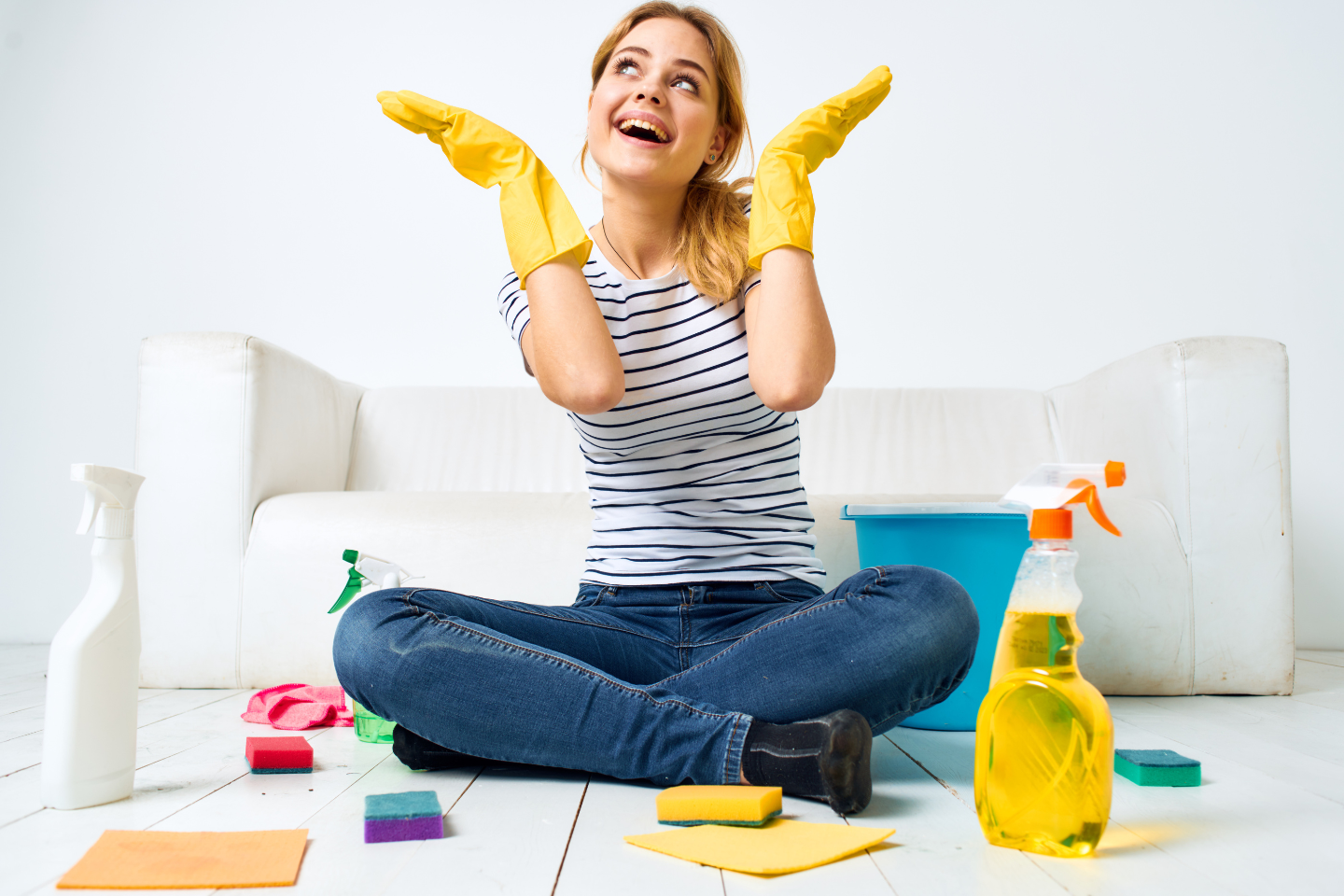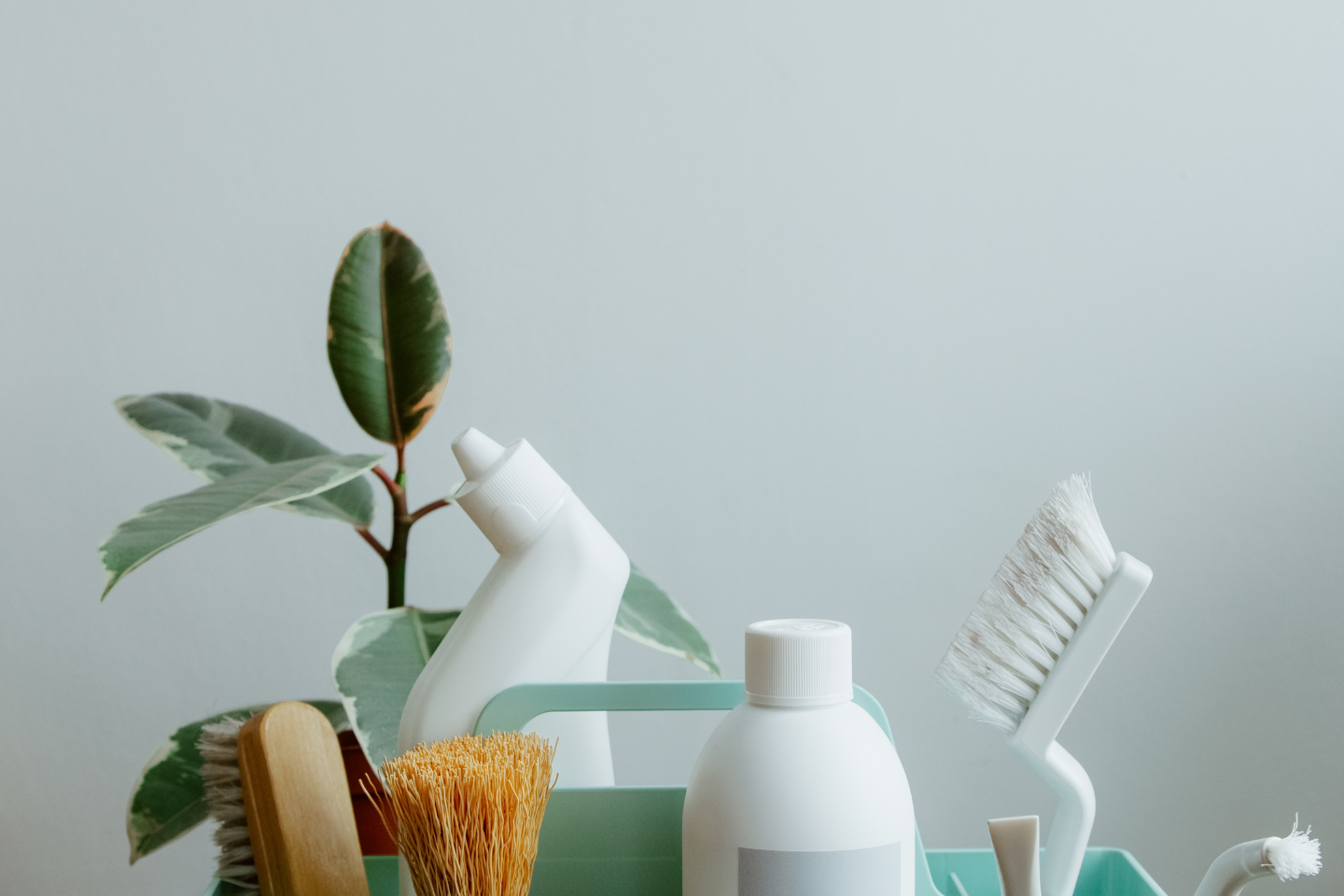
Category
Homecare
10 ways to clean your home more efficiently
Posted by AMH Team
7m read time
Sep 6, 2022
Do you dread moving from room to room with a vacuum and a brush, digging into corners, scrubbing dirty sinks, and wondering where that mystery stain on the living room came from? Cleaning your home can be overwhelming, if you approach it without a strategy. Don’t worry—we’re here to help!
5 improvements to home cleaning
Whether you’ve just moved into your home or have lived there for a while, your cleaning methods could likely use an upgrade. These five tips will improve your efficiency.
If it’s not dirty, don’t clean it
If you enjoy following a routine, you might fall into a pattern of cleaning things that don’t need cleaning. A good rule of thumb is to wash your kitchen sink daily and your bed sheets weekly. But did you go out to dinner and didn’t use your sink all day? Or maybe you just returned from a week-long vacation, and your bed was neatly tucked in the entire time? Those surfaces likely aren’t that dirty because you haven’t touched them. Save some time and energy by waiting until the next cleaning cycle.
This rule applies to clothes, too. Wash items such as underwear, socks, or sweaty workout gear after you wear them. But a wool sweater or a pair of jeans can likely go through several days of being worn before needing a wash. Fold or hang up the clothes you aren’t washing and enjoy the lower water and electricity bills from doing less laundry.
Start from the top down
It’s easiest to start cleaning whatever’s right in front of you, but pretend your home is like Tetris. Everything will come down eventually, so tackle the next obstacle at the top. In this case, we’re talking about shelves, dressers, bookcases, window shades, and other taller surfaces where dust accumulates. If you clean lower surfaces or the floor first, you’ll only add more dust and dirt to those surfaces when you move up. As a bonus, starting from the top of a room and working your way down gives you a nice stretch. You’ll loosen up your muscles for additional cleaning around the house.
Change up your dishwasher game
When there’s a dirty dish in the sink, what’s the first thing you do with it? If your answer was a variation of “rinse it with water and scrub off every bit of food,” you’re spending too much time with the dishes. If your answer was “throw the dish away,” that’s also ineffective (and probably a bit of an overreaction).
When there are larger items or quantities of food still on a plate, like an entire rib bone or excessive sauce, you can toss it or scrape it off. But dishwasher detergents use ingredients designed to attach to food particles. Those enzymes dissolve what’s built up on the plate, bowl, or glass. Then, water powerfully sprays everything away.
Pro-tip: Use a mesh laundry bag that’s dishwasher-safe for smaller items in multiple sets, such as storage container lids, bottle tops, small measuring cups, or spatulas. Simply place all the items in the bag and toss it in the dishwasher. The mesh fabric allows soap and water to clean the items, but you don’t have to worry about losing them or picking them up one at a time. It’s one of our favorite kitchen cleaning hacks!
Use a laundry basket or storage bin for loose items
Cleaning also means collecting the clutter built up around the house. You might have a few different piles of laundry or books across your bedroom, living room, and office floor. Or maybe a dog has scattered toys throughout every room. Even if we don’t plan on it, our daily routines lead to clutter that must go back to its rightful place.
Rather than picking things up as you see them, grab a laundry basket or storage bin, and place the items in it while walking through your home. This move will spare you multiple trips back and forth between rooms, and you can more effectively make your home sparkle. Plus, that newfound free space is a welcome sight!
Try reusable cleaning products
As more households try to reduce waste, cleaning products are following suit. Companies are attempting to minimize plastic in their packaging, so more containers are made from glass or other reusable components. Instead of throwing the container away when you’re done, you can use it several times.
Extend reusability to your cleaning tools. Ditch one-time-use products like paper towels and disposable cleaning wipes and go for reusable microfiber cloths. Use washable mop heads and sweepers to maximize your cleaning efficiency and environmental impact. On a daily level, mix soap tablets and water in a glass bottle instead of buying a new bottle of soap every time you run out. You’ll save yourself a trip to the store while helping reduce waste.

5 mistakes to avoid
While enhancing your cleaning methods is an important skill, you also want to avoid making mistakes that can potentially undo a good clean. Here are five common errors to watch for.
Using unclean tools
If your cleaning tools are dirty, you’re only spreading that dirt and bacteria throughout your home. Disinfect toilet brushes every time you use them. Regularly wash brushes, cloths, and mops. Empty out vacuums and dryer lint catchers before they get too full. Those simple changes will have a positive impact on both cleaning and drying.
That same advice goes for sponges, which are inviting homes for germs. Either disinfect your sponge or use a new one—you should be replacing it at least once a month anyway—or use a microfiber cloth instead. Make sure you’re not bringing the same cloth or disposable wipe around the entire house, or else you’re transferring grime between rooms.
Treating messes incorrectly
Oops! You just knocked a glass of wine or a plate of food onto the carpet and your favorite chair. Whether you’re in your living room or out on your patio, you might start scrubbing to prevent a stain. That move often does more harm than good, with the food or liquid spreading further into furniture or carpet fibers.
Instead, blot the stain with a clean cloth to absorb as much moisture and residue as possible. Then, use a cleaning product designed for treating stains on whatever surface you’ve spilled on. Similarly, disinfectants typically require at least a few minutes to set on a surface and eliminate germs and bacteria. If you immediately wipe it away with a cloth, you’re likely minimizing its impact. Read the directions for cleaning products before you use them.
Inviting dirt and mildew into the home
Even the most hygienic of people still have some grime and dust in their homes, but plenty of us are rolling out the welcome mat for dirt and mildew. Wearing shoes around the house is like mopping the floor with bacteria. Keep germs contained by leaving a designated space for shoes, such as a rack or plastic bin.
Meanwhile, mildew grows on wet surfaces. Not only does it typically smell, but it also attracts unwanted pests into your home. Luckily, that’s an easily avoidable scenario. Keep your shower area and towels dry as can be. When you’re done showering, close the shower door or ensure the shower curtain is fully pulled across with a few inches of space on both sides to dry properly. To further reduce the likelihood of mildew, avoid leaving towels bunched up or crumpled.
Leaving messes you know you’ll have to clean later
Piles of dirty dishes are like a skate park for germs, with bacteria running rampant. If the plates contain food, you might come home to a sink full of ants or other pests.
Someone in the house may also be guilty of hoarding food in the fridge and pantry. You’re walking on thin ice when the “best by” date is more than a year ago. Food stored incorrectly leads to bugs, bacteria, and mold.
In both cases, spending a little more time upfront leads to a better result down the road. Either wash your dishes immediately or put them in the dishwasher. And if you know you’re not going to eat those leftovers or finish that nearly empty drink in the fridge, just throw them out.
Not paying attention to yourself
Some cleaners contain ingredients that don’t always agree with your sinuses. Particularly with ammonia or bleach products, you might start experiencing runny eyes, a stuffy nose, or even light-headedness after exposure.
To combat this, open a window or door, or turn on your vent fan. An air purifier or essential oil diffuser can also help reduce allergies by capturing pollutants and reducing airborne bacteria. When you finish cleaning a room, don’t hang around. Those cleaning products may start irritating your senses. Move onto the next room or take a break elsewhere.

Cleaning your home doesn’t have to be a chore. Now that you’re armed with the knowledge to make things more efficient, get out there and let your home shine!
© 2025 American Homes 4 Rent, LP
All graphics, images, drawings, plans, photos, details, and videos, along with all artistic concepts and depictions in digital renderings and virtual tours and stagings, are for illustration purposes only. The actual appearance and features of the properties and communities may vary. Please verify all community and property details prior to signing a lease. American Homes 4 Rent®, AMH®, AH4R®, Let Yourself In®, AMH Development®, American Residential®, and 4Residents® are registered trademarks of American Homes 4 Rent, LP. 4Rent℠, AMH Living℠, and 4Communities℠ are service marks of American Homes 4 Rent, LP. AMH refers to one or more of American Homes 4 Rent, American Homes 4 Rent, L.P., and their subsidiaries and joint ventures. In certain states, we operate under AMH, AMH Living, or American Homes 4 Rent. Please see www.amh.com/dba to learn more.



